How Does a Turn Coordinator Work? Pilot’s Guide
Oct 15, 2024
How the Turn Coordinator Works
The turn coordinator is a vital tool in aviation, it uses a gyroscope mounted at 30 degrees above the aircraft’s longitudinal axis and aligned with the axis of the aircraft. This allows it to tell you how the aircraft is turning.
By combining two functions into one the turn coordinator is a rate of turn indicator and a slip/skid indicator also known as an inclinometer.
This gives you all the feedback you need to control and be aware of your navigation during flight.
The heart of the turn coordinator is based on the precession of the gyroscope.
With the turn coordinator's gyro 30 to 45 degrees above the back of the plane it is sensitive to rotations around both the vertical and longitudinal axes so you can make informed decisions and be stable.
Understanding the Turn Coordinator
Essential Role in IFR Operations
The turn coordinator is key to IFR flying as it gives you the rate of turn and roll information so you can maintain control even when visual references are not available. A Turn Coordinator Diagram can be particularly useful here, as it visually illustrates how the device operates and its relationship with other instruments.
Mastering Turn Coordination
Understanding turn coordination is key. The turn coordinator tells you if you’re slipping or skidding and what bank angle you need to achieve a certain turn rate, like a full circle in 2 minutes.
Precision in Coordinated Flight Control
For precision in flight control and navigation the turn coordinator is a must have. It smooths out turns and overall flight safety and efficiency in all flying conditions.
Multifunctional Guidance with Turn and Slip Indicator
This device does multiple jobs, gives you a big picture. Keeping the turn coordinator wing aligned ensures accurate calibration, crucial for maintaining proper flight dynamics during a turn. It shows you which direction the aircraft is turning and the rate of heading change. That’s important for staying on course and adapting to flight dynamics.
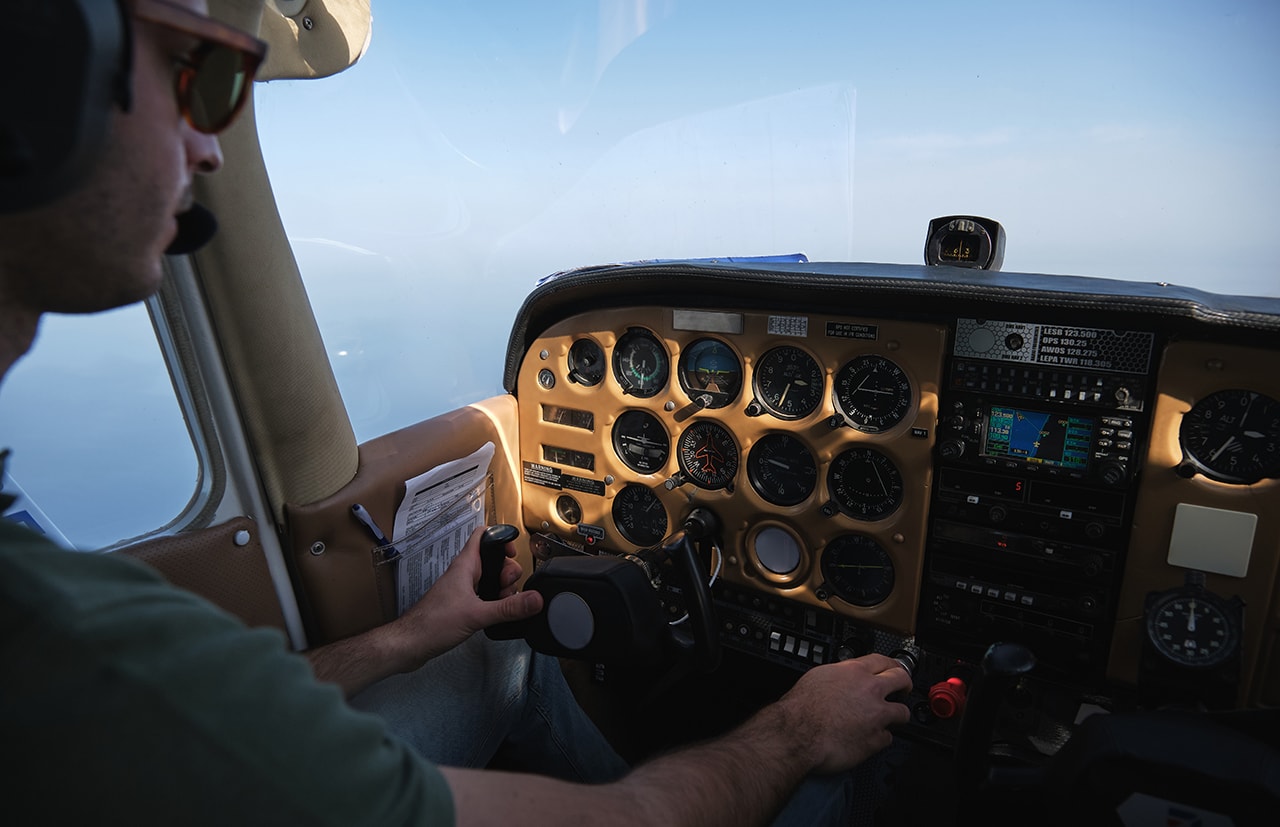
Dual Instrument Integration
The turn coordinator combines two important instruments: the turn indicator and the inclinometer. This integration gives you a better picture of what’s happening during turns and helps you make better decisions.
A Pilot’s Trusted Companion
In general, the turn coordinator is a pilot’s best friend, help you navigate the skies with confidence. By understanding how it works you can improve your controlled turns and have safer and better flights.
Comparison to Other Instruments
The turn coordinator is often compared to other flight instruments like the turn and slip indicator, bank indicator and attitude indicator. While they share some similarities, each has its own purpose and characteristics.
The turn and slip indicator are an older version of the turn coordinator. It shows rate of turn but not bank angle.
The turn coordinator combines two instruments in one, showing both rate of turn and bank angle for a given rate of turn.
This is why the turn coordinator is a more complete tool for pilots, particularly when understanding the relationship with the turn and bank indicator.
The bank indicator is a separate instrument that shows the bank angle of the aircraft. While it gives similar information to the turn coordinator, it doesn’t show rate of turn.
So, while the bank indicator can help pilots know the position of the aircraft during a turn, it doesn’t give the complete picture that the turn coordinator does.
The attitude indicator, also known as the artificial horizon, shows the pitch and roll attitude of the aircraft.
It gives important information on the orientation of the aircraft but doesn’t show rate of turn. That’s why it’s an essential tool for overall situational awareness but not as specialized for turn coordination as the turn coordinator.
By understanding the unique features and limitations of these instruments, pilots can better appreciate the comprehensive capabilities of the turn coordinator in managing controlled turns.
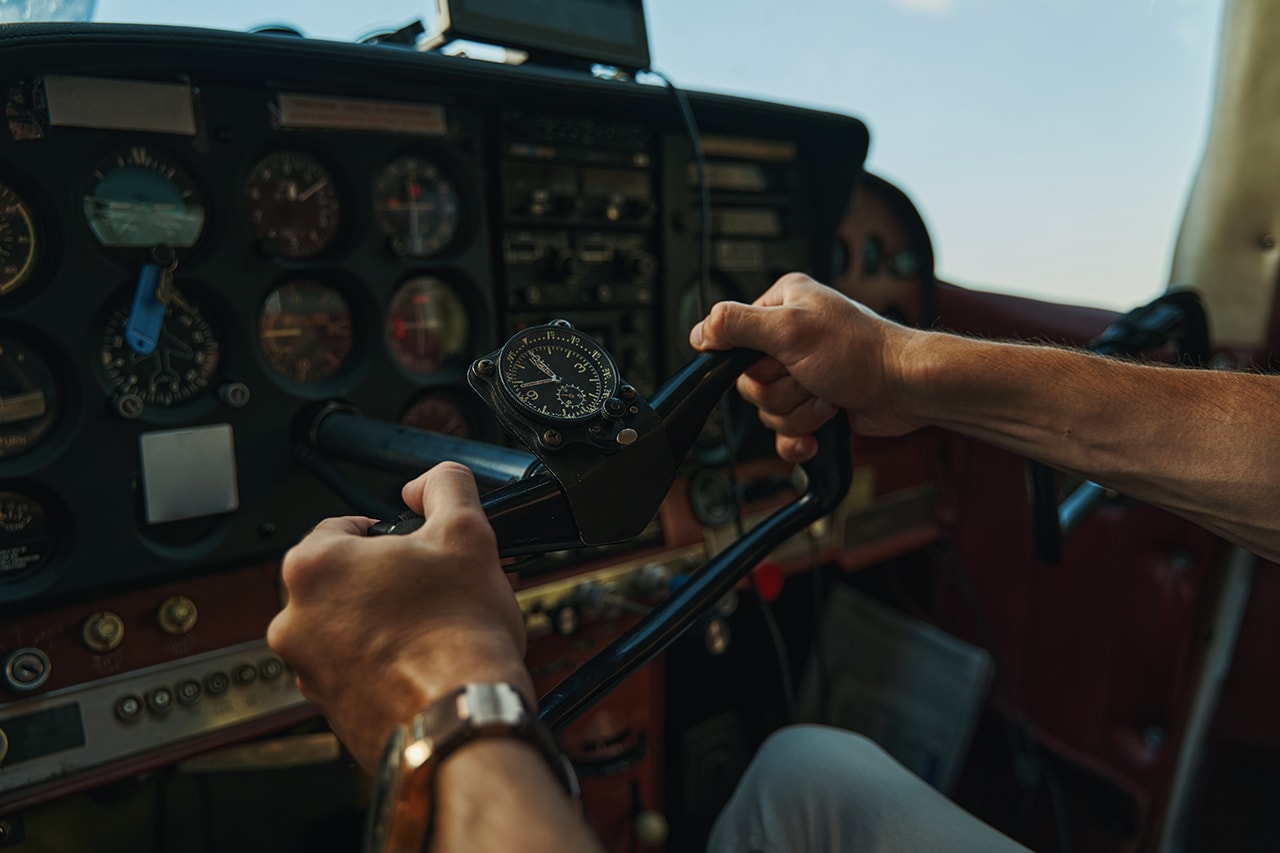
Recognizing and Correcting Slips and Skids
The inclinometer is a key tool in the turn coordinator, so pilots can see the roll and yaw of the aircraft. This shows how smooth the turn is and tells you if you need to adjust.
When the ball in the inclinometer goes outside the lines it’s not coordinated. You need to apply rudder to get the ball back in the lines for smoother and safer flight.
Coordinated turns are key to safety. Uncoordinated turns where the aircraft is not flying where you intended can be dangerous, so use the inclinometer wisely.
A slip is when the nose of the aircraft turns inwards of the turn and a skid is when the nose turns outwards. Both can affect stability and need to be corrected immediately for safe flying.
Pilots can be aware by looking at the horizon and using their peripheral vision. This will help you see uncoordinated movement sooner and correct it sooner.
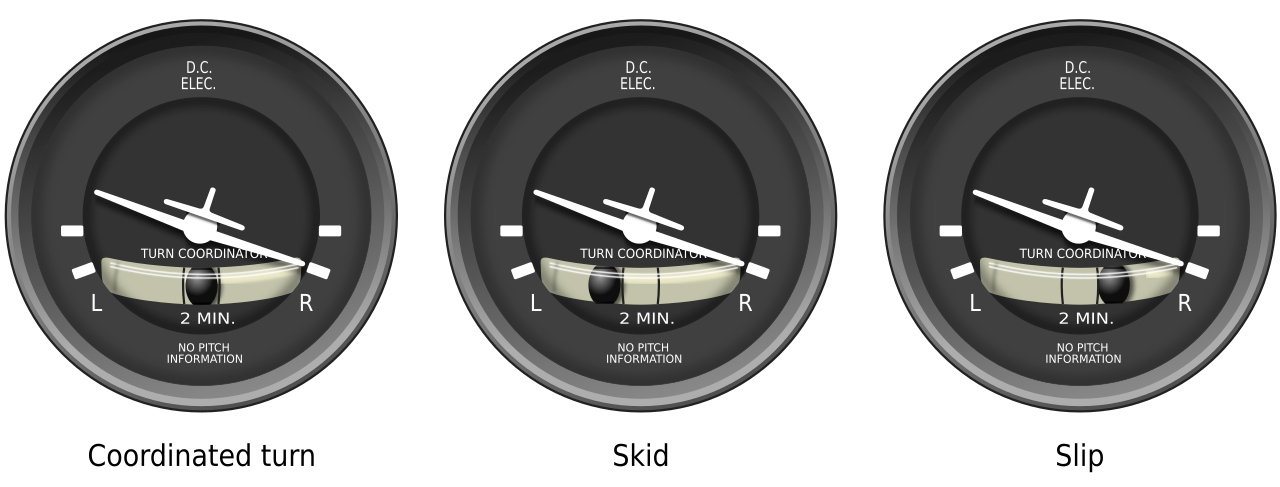
The Role of the Bank Indicator in Controlled Turns
The bank indicator is a crucial part of the turn coordinator, offering pilots necessary insights into the aircraft's bank angle. This information is essential for understanding how the plane is positioned during turns.
With the bank indicator, pilots can assess the required bank angle for any specific rate of turn. This helps in executing precise maneuvers while flying.
Maintaining coordinated turns is key to smooth and controlled flight. It ensures the aircraft stays on its intended path without unnecessary deviation.
The bank indicator's importance is heightened during instrument flight rules (IFR) operations. In these scenarios, pilots heavily depend on instruments to navigate safely.
Instruments like the bank indicator become a pilot's guide to maintaining flight stability, especially when visual cues are limited or nonexistent.
Overall, the bank indicator plays a pivotal role in aviation safety, empowering pilots to perform controlled turns confidently, regardless of the flying conditions.
Standard Rate Turn
A standard rate turn is a turn at 3 degrees per second. That’s 360 degrees in 2 minutes. Maintaining a standard rate turn ensures smooth and coordinated flight, which is crucial for both safety and efficiency.
To execute a standard rate turn, pilots must use the turn coordinator to monitor their bank angle and rate of turn.
The turn coordinator displays the rate of turn as a small airplane symbol that rolls (rotates) right or left depending on the bank angle and rate of turn.
The pilot must adjust their bank angle and rate of turn to maintain a coordinated turn, ensuring that the aircraft’s lift and thrust are used efficiently.
By keeping an eye on the turn coordinator, pilots can ensure that their turns are precise and coordinated.
This not only helps in maintaining the intended flight path but also in managing the aircraft’s energy and avoiding unnecessary stress on the airframe. Mastering the standard rate turn is a fundamental skill for any pilot, contributing to smoother and safer flight operations.
Mastering Controlled Turns with the Turn Coordinator
Mastering controlled turns with the turn coordinator requires pilots to effectively interpret the instrument's signals.
This crucial skill involves understanding how the turn coordinator responds to the aircraft's movements, specifically its roll and pitch.
The turn coordinator provides visual cues through the movement of its balls and pins.
These movements guide pilots in making necessary adjustments to keep the aircraft on the desired flight path. It's a straightforward yet critical tool for maintaining turn precision.
In addition to the turn coordinator, pilots must account for other key factors like airspeed and altitude.
These elements are essential in maintaining the aircraft's control and stability during flight maneuvers.
Pilots need to be aware of how changes in these factors can affect their flight performance.
Achieving precise control during turns can be enhanced by using additional instruments.
The heading indicator and altimeter complement the turn coordinator by providing more comprehensive data, allowing pilots to navigate safely even in complex flying conditions.
Ultimately, mastering these tools and techniques empowers pilots to fly with confidence.
It ensures they are equipped to handle various flying scenarios with accuracy and safety, fostering a secure flight experience for everyone on board.
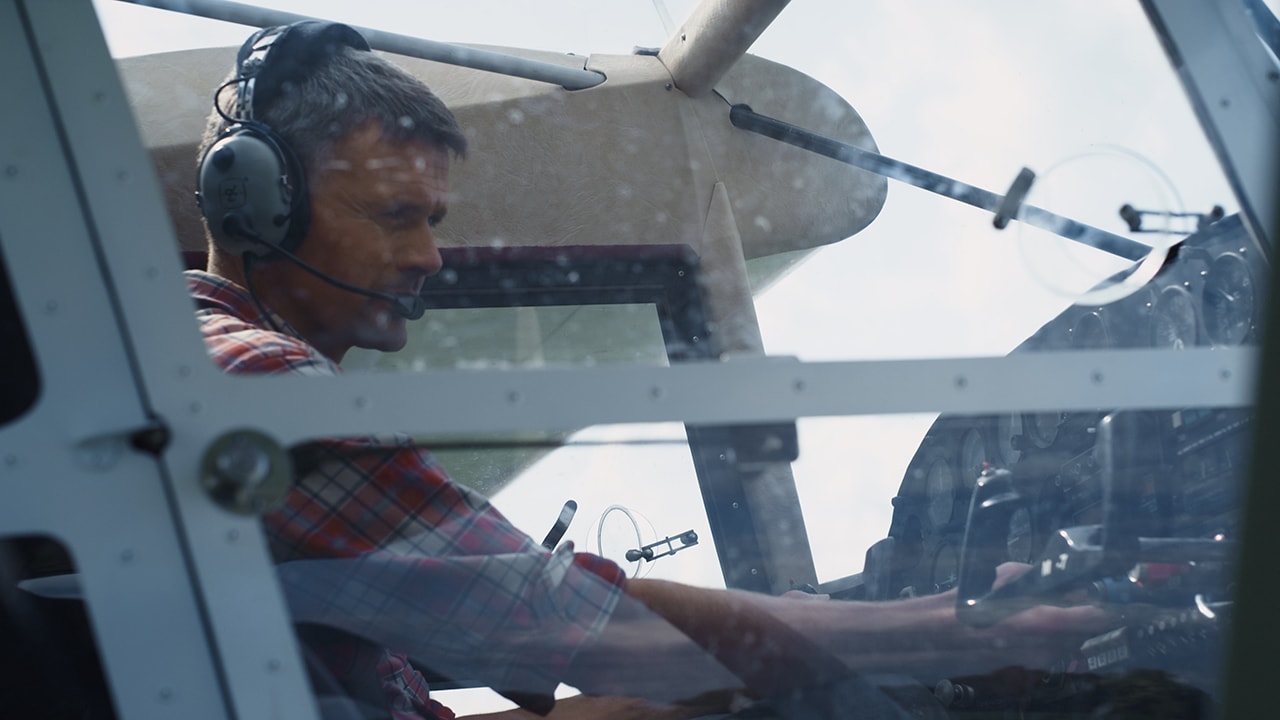
Glass Cockpit Turn Coordinators
Glass cockpits turn coordinators are modern versions of traditional turn coordinators, featuring electronic sensors to measure and display data on a digital screen.
These instruments are more reliable and less prone to mechanical failures than their traditional counterparts, offering a significant advantage in terms of maintenance and accuracy.
Glass cockpit turn coordinators use the Attitude and Heading Reference System (AHRS) to get their readings, rather than a gyro.
This advanced technology provides more accurate and reliable data, allowing pilots to maintain coordinated flight with greater ease.
The digital display offers a clearer and more comprehensive view of the aircraft’s flight dynamics.
In addition to displaying the rate of turn and bank angle, glass cockpit turn coordinators often include additional features, such as electronic attitude indicators that display the aircraft’s pitch and roll attitude, heading indicators that show the aircraft’s magnetic heading, and altitude and airspeed indicators.
These integrated features provide pilots with a more holistic view of their flight parameters, enhancing situational awareness and decision-making.
Overall, glass cockpit turns coordinators provide pilots with a more comprehensive and accurate picture of their aircraft’s flight dynamics.
This makes it easier to maintain coordinated flight and ensures safe and efficient flight operations, especially in complex flying conditions.
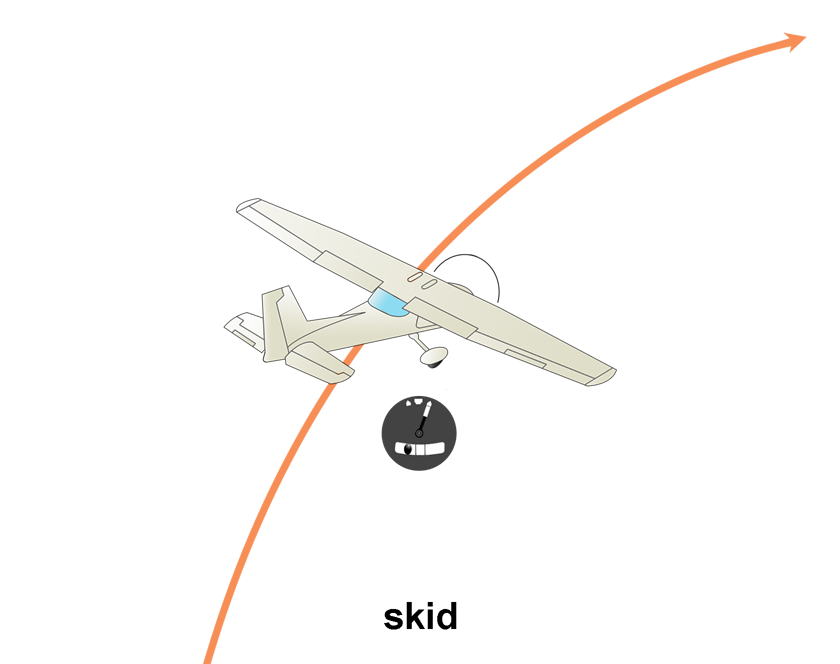
Common Challenges and Solutions
Pilots often struggle to detect and correct for slips and skids on the turn coordinator. This can be tricky because these movements are so subtle in flight.
To manage slips and skids, practice coordinated turns frequently.
By doing so you’ll improve your spatial awareness and feel for the airplane. Another issue is maintaining a standard rate turn. This is key to consistent flight. Use the hash marks on the turn coordinator as a reference point.
Remember the turn coordinator is not the whole picture. Don’t rely solely on this instrument.
Use other instruments to verify your flight path. By using a holistic approach and multiple tools you’ll be accurate and safe and everyone on board will be too.
Simplified Preflight Checks for the Turn Coordinator
Before you fly, make sure to do a preflight check on the turn coordinator. This will ensure it’s working properly for the trip.
First, make sure the turn coordinator is powered up. Without electrical power, it won’t give you the information you need to navigate.
Next, make sure the gyro in the turn coordinator is spinning. A spinning gyro means the whole thing is accurate.
You also need to make sure the ball in the curved glass tube can move freely. This is how you detect slips and skids.
Lastly, calibrate the turn coordinator and set it to standard rate turn. Calibration ensures you get the most accurate readings possible, for everyone’s safety.
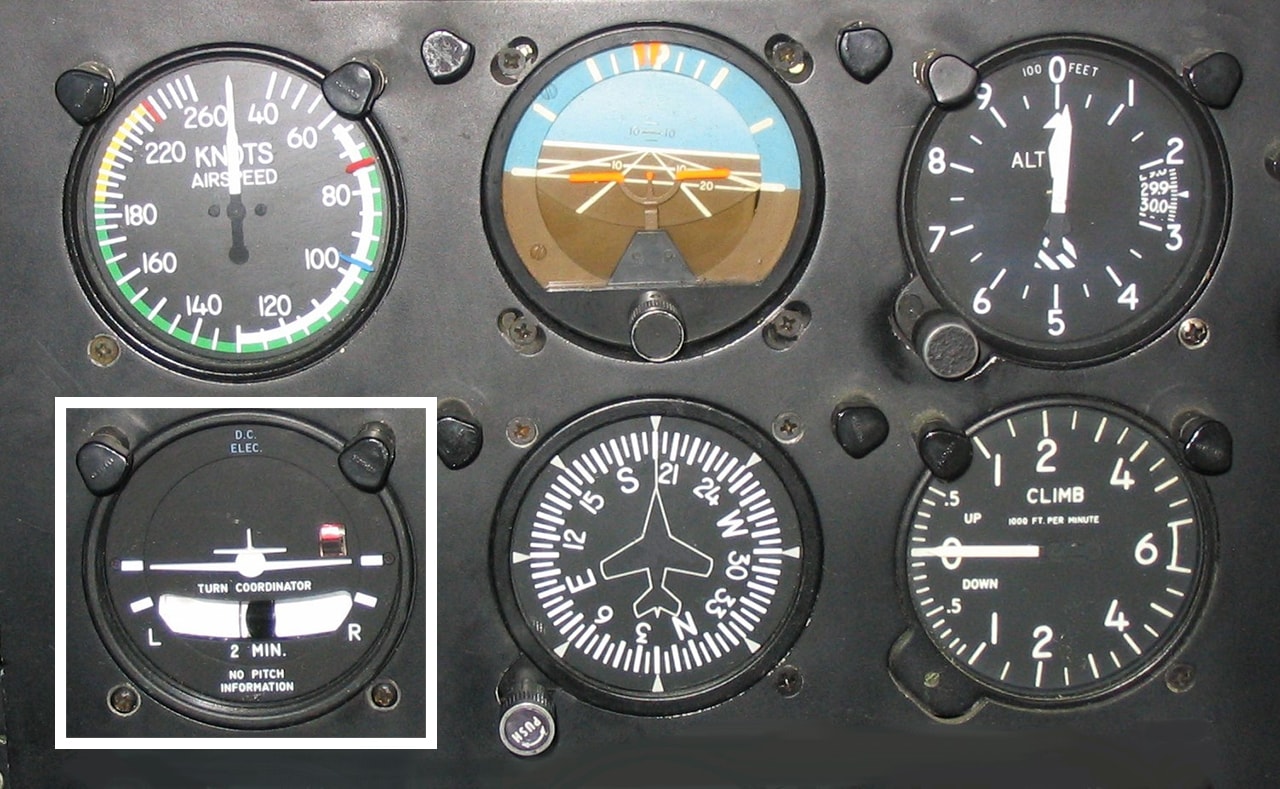
Conclusion
The turn coordinator is a vital tool in aviation, giving the pilot the aircraft’s attitude and turn rate. You have to know how to use it.
Knowing how the turn coordinator works and using it properly gives you control of the aircraft. That’s critical for navigation.
Practice and preflight checks are key to keeping the turn coordinator in working order. Keeping it working gives you accurate readings.
By using the turn coordinator, you get coordinated flight. That helps prevent slips and skids.
In the end the turn coordinator makes for a safer flying experience for everyone.
